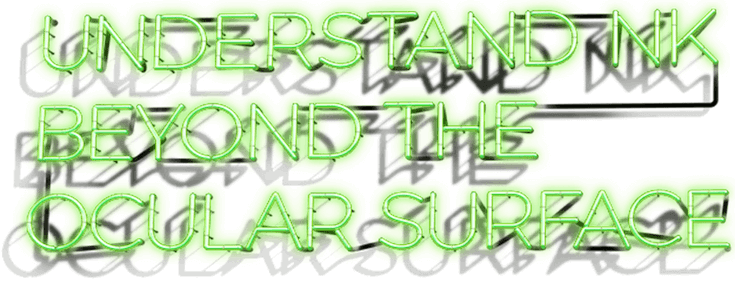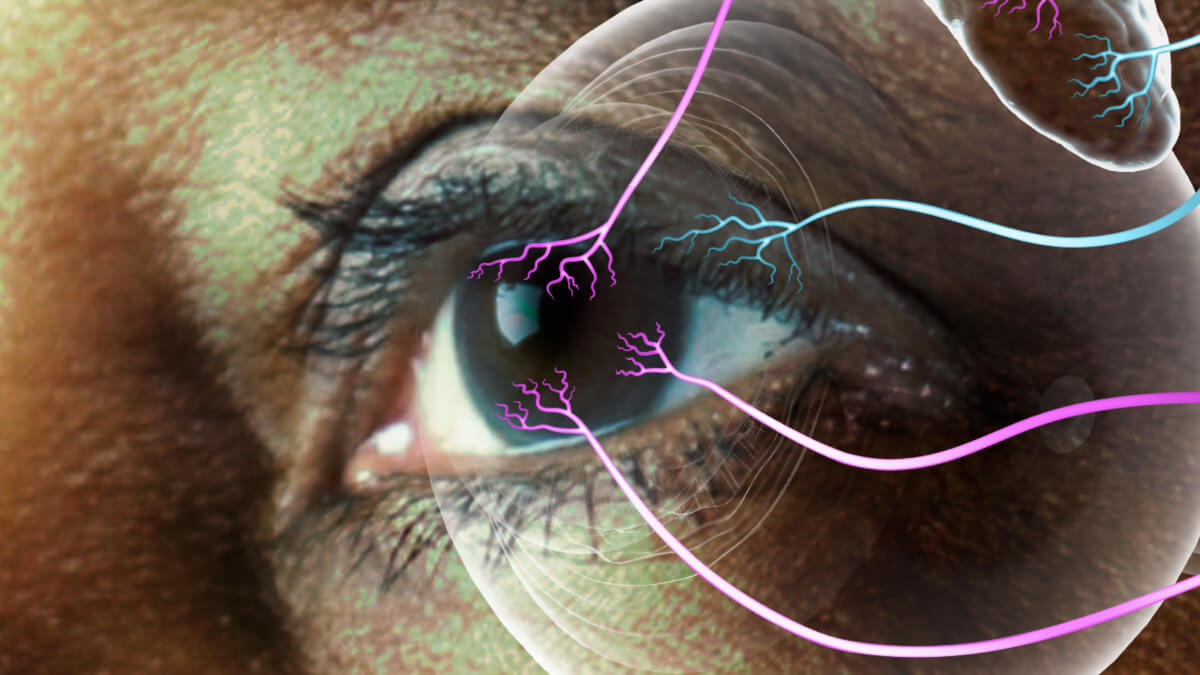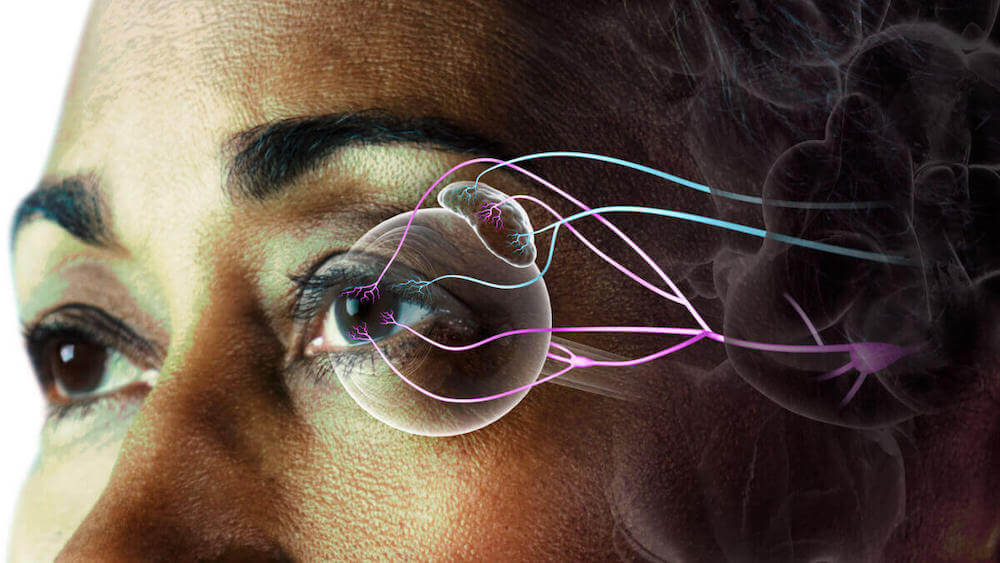
LOSS OF CORNEAL SENSITIVITY IS THE HALLMARK OF NK1
To learn what causes neurotrophic keratitis (NK) and identify it as early as possible, we must know the role of the corneal nerves in maintaining ocular surface homeostasis.1,2
What is NK
A DEGENERATIVE DISEASE CAUSED BY CORNEAL NERVE DAMAGE
Neurotrophic keratitis (NK) is defined as a rare disease, and can be mistaken for more common conditions, such as recalcitrant dry eye disease.1
A key differentiator between NK and other ocular conditions is the reduction in or total loss of corneal sensitivity. This loss is caused by damage to the corneal nerves, which leads to poor healing and breakdown of the corneal epithelium.2
IMPORTANCE OF CORNEAL SENSITIVITY
CORNEAL NERVES HELP MAINTAIN OCULAR SURFACE HOMEOSTASIS
By providing nourishment to the ocular surface and stimulating protective reflexes, such as blinking and tear production, healthy corneal nerves help maintain corneal integrity and homeostasis. Corneal sensitivity is a key indicator of corneal nerve function.2
Ocular surface homeostasis is maintained by an intricate feedback loop of corneal nerves, the lacrimal gland, and the corneal epithelium.1,2
Select each number to learn about the steps involved in maintaining ocular surface homeostasis.
Corneal nerves send sensory information to the brain.1
In turn, the brain sends signals back to trigger protective reflexes, such as tear production and blinking.4
Corneal nerve fibers release neuromediators that promote nourishment to the cornea and stimulate healing.2
Corneal epithelial cells and keratocytes release growth factors like NERVE GROWTH FACTOR (NGF), NEUROPEPTIDES, and NEUROTROPHINS to help maintain ocular surface homeostasis by supporting the survival and maturation of corneal nerve fibers (as shown in preclinical models).2,3
References: 1. Dua HS, Said DG, Messmer EM, et al. Neurotrophic keratopathy. Prog Retin Eye Res. 2018;66:107-131. 2. Mastropasqua L, Massaro-Giordano G, Nubile M, Sacchetti M. Understanding the pathogenesis of neurotrophic keratitis: the role of corneal nerves. J Cell Physiol. 2017;232(4):717-724. 3. Müller LJ, Marfurt CF, Kruse F, Tervo TMT. Corneal nerves: structure, contents and function. Exp Eye Res. 2003;76(5):521-542. 4. Labetoulle M, Baudouin C, Calonge M, et al. Role of corneal nerves in ocular surface homeostasis and disease. Acta Ophthalmol. 2019;97:137-145.

